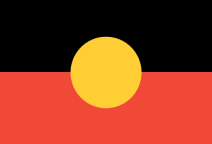Helping kids stay safe online often includes valuable advice on cyber-bullying, privacy and online grooming. Just as important though, is helping children and young people identify false information.
With so much going on in the world, fake news and misinformation has proliferated online in recent years. As the Covid-19 pandemic took hold, false information about the virus’ origins and various so-called cures abounded on the internet and social media apps.
Whether we condone it or not, the reality is children and young people are spending a fair amount of time online. Research from the office of the eSafety Commissioner shows a 17-year-old spends twice as much time online as a 12-year-old. To help them spot fake news and identify reliable online information, encourage them to ask questions about what they see and read.
Tips to spot a fake
1. Identify the source and author. Is the source reliable? Does the author appear credible? Don’t always take information at face value. Double check the veracity of facts through web searches with other trustworthy sources such as government departments or credible media outlets. Is the information repeated by other reliable sources?
2. Does it include sensational headlines or imagery? Clickbait uses dramatic headlines or attention-grabbing images that link the user through to misleading or less-interesting information, usually exposing them to advertising.
3. Check the URL or site name – does it sound unusual? If it is, it could be fake.
4. Accuracy of spelling and grammar – spelling mistakes and grammatical errors are a red flag.
5. How do you feel? – fake news relies on emotion to help deliver a distorted message. Does the information or image spark a strong feeling in you? Do you feel emotions such as anger, shock or joy? This could signal that the content is unbalanced or inaccurate.
6. Check images – pictures and videos can be manipulated so check to see if there are other versions and verify where they came from.
While many social media sites say they are cracking down on fake news, it is important children are empowered and equipped with the skills to assess information so they can determine whether it is reliable.
Fake news spreads confusion, normalises biases and, in extreme cases, can incite violence. If something is hard to believe, sounds too good to be true, or there are prizes attached, it is probably fake.
Before blithely sharing information or images with friends, young people should be encouraged to use old-fashioned critical thinking skills to assess the information and follow a golden rule: don’t share anything unless it is true. If there is any doubt, children should talk to a parent, caregiver or other trusted adult.
Critical thinking skills are among the vital life skills fostered in Constable Care Foundation’s upper primary and secondary schools theatre-in-education programs.
Find a suitable performance for your class or school here.
Sources:








